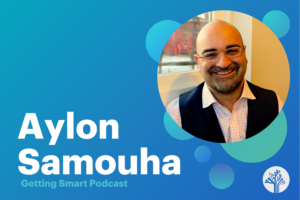Sentopiary Moves The Needle In Teaching Grammar

The need to formally teach grammar in elementary and middle schools has been a vexed question for many years.
But over the past twelve months, more experts have been weighing in, arguing that grammar is essential to helping students communicate their ideas effectively. As Misty Adoniou, Senior Lecturer in Language and Literacy at University of Canberra wrote on The Conversation’s education section last year, grammar helps students, “Use language with intention and effect, for any purpose and in all circumstances.”
Even renowned bestselling author and former English teacher, Stephen King, added his two cents to the discussion, telling The Atlantic’s Jessica Lahey that by naming parts of grammar, “We take away the mystery and turn writing into a problem that can be solved.”
Increasingly, it is being recognized that the problem was not with why grammar should be taught, but how. A new study from Pathan and Aldersi finally reveals that, “The success or failure of learning, mastering and using the grammatical rules and structures is largely determined by the technique and approach used by the grammar teacher.”
This is where EdTech can open up new opportunities and reinvigorate one of the oldest and most staid of subjects.
Lindy Hockenbary is an integrated technology specialist working with elementary and middle school teachers across the Montana District, through her InTECHgrated Professional Development business. Her main approach to integrating educational technology in the classroom starts with strong instructional design: “We unpack the curriculum standards into skills and content, define learning objectives and assessments, and then decide on instructional strategies,” Hockenbary says. In this way, the learning goals influence what apps are chosen and not the other way around.
“Technology is just another tool for learning like index cards and markers,” Hockenbary affirms. “You need to work out your curriculum goals first, and ask will tech be a purposeful tool.”
Hockenbary is seeing teachers request ideas for grammar apps that can bring a sense of play and excitement to the subject:
I see it happening a bit more where they focus on writing. The common core standards are broken down into writing, reading and language, and while the language part covers the specific grammar standards, I see more teachers teach it as part of the writing process.
A range of grammar apps are available to teachers at all levels, and many are specifically trying to address the dryness of grammar studies directly by creating games and encouraging a playful approach to learning.
iTooch 5th Grade Language Arts, Ubooly Talks! and The Grading Game are three leading grammar apps that have the highest levels of positive reviews in the iTunes App Store amongst the twenty or so grammar apps currently on the market.
Many of these reflect only the tip of the iceberg of what is possible. According to Natalie Tschechaniuk, who is part of the team that has created the new sentence-building app, Sentopiary. She recently mentioned that:
Most of the current grammar apps are essentially books, flashcards, or quizzes on a screen: the content is robust but the interaction is nothing new. Others are more like games and have great graphics, but the content is limited. Some have the look and feel of an app for a younger kid but the vocabulary at a middle-school level. Lastly, I didn’t find many apps that I thought could be used successfully by teachers in a classroom setting.
Sentopiary focuses on sentence-building, updating the idea of sentence diagramming exercises to help students identify definite articles, adverbs, nouns and verbs in a sentence. The app includes several levels roughly matching U.S. class curriculum and has a challenge mode that lets students pace themselves through a series of increasingly difficult sentences to deconstruct.
To ensure Sentopiary’s usefulness in the classroom, Tschechaniuk says a lot of thought went into the progression of levels in the app and the choice of vocabulary:
My primary resource for matching the content of the levels in Sentopiary to the Common Core was the Common Core State Standards. I read the Language standards (part of the English Language Arts/Literacy standards) for K-6 and pulled from those standards the elements that were applicable to Sentopiary: when certain parts of speech are introduced/emphasized; the first pronouns students learn; when prepositional phrases are introduced, etc. This was my go-to source for any questions about order or acceptability of content.
On the library she continued in saying:
The vocabulary is compiled from many lists for and by teachers as well as standard early literacy vocabulary lists. We wanted to include vocabulary that is fun and appealing to kids and also offer abstract and sophisticated words in the higher levels. The vocabulary follows a general progression, for example: root words are introduced in an earlier level and then more difficult words with the same root become available in a higher level.
How teachers choose to teach grammar is still a fairly individual or schools-based choice, and must be aligned with how the core curriculum standards are being applied to each classroom. But a new generation of apps like Sentopiary are making sure that it is easier for teachers to excite students and make learning fun.







0 Comments
Leave a Comment
Your email address will not be published. All fields are required.